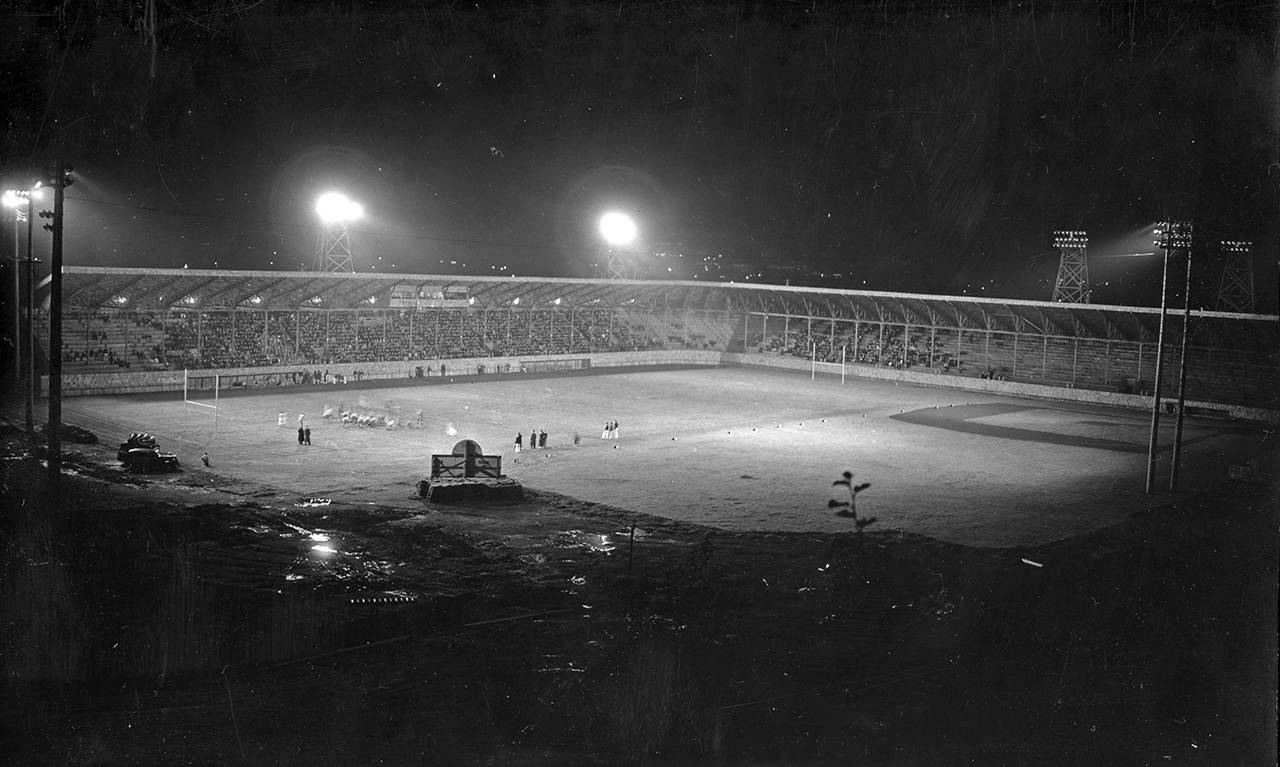By Kat Bryant
Grays Harbor News Group
The Smithsonian is officially opening its traveling exhibit “Hometown Teams: How Sports Shape America” Saturday at the Polson Museum.
“We’ve been planning for this exhibit for the better part of two years, when Humanities Washington announced that they would be sponsoring the exhibition’s coming to Washington,” said John Larson, executive director of the Hoquiam museum. “The Polson applied to be one of the venues for the exhibit and was fortunate to be chosen.”
In Washington, the traveling exhibit has been featured in Moses Lake, Auburn, Spokane, Tieton, La Conner, Ilwaco and Lynden so far, according to Larson. “We’re next, and after us it will close out in Renton.”
Humanities Washington is covering the cost of trucking, installation training and public programming at each location in this state.
“We’ve also created a strictly Grays Harbor-centric sports exhibit to run in conjunction with the national traveling exhibition,” said Larson. “Featured in this are some true gems from our collection including historic photographs, vintage sports equipment, posters, fan paraphernalia and more.”
Larson called on several local experts to develop a list of great sports figures in Grays Harbor history, including athletes, coaches, supporters and broadcasters.
“Starting with extensive research done by museum docent Dave Seymour in looking through school annuals and other resources, we asked Rick Anderson, George Donovan, Corky Hathaway, Tom Quigg, Larry Jones and Gary Patterson to meet and hone a list that to date has topped 300 names,” said Larson. “The team tried to highlight Harborites who have gone pro, who excelled in high school and college, who have accomplished unique sports achievements and even those who have quirky nicknames.”
Two long meetings spurred plenty of ideas, memories and stories among that group.
“I think the consensus that we reached was it was almost impossible to determine a No. 1 overall athlete or team because of the differences between sports and eras,” said Anderson, who served for decades as The Daily World’s sports editor before retiring in 2017. “How do you compare someone like Mark Bruener, the Aberdeen High football player who started as a tight end at the University of Washington and in the NFL, with somebody who might have been outstanding in two or three sports?
“I think we were all overwhelmed by the enormity of the assignment and agreed that there is no one single source for Grays Harbor sports history,” he said.
Larson hopes to change that through this project.
“The end result (of their work) is that we’ll have a couple of binders in the exhibit for guests to read — and add to — in an effort to develop a comprehensive record of Grays Harbor’s greatest sports figures over time,” said Larson. “Should be a fun bit of nostalgia for folks to pore over.”
In addition, two other Hoquiam venues are hosting events related to the sports exhibit.
Two free public lectures are scheduled in March at the Hoquiam Timberland Library. On Thursday, March 19, Mike VanQuickenborne will present “The Good Game: On the Moral Value of Sports.” And on Thursday, March 26, the exhibit’s state scholar, Eric Davis, will present “What Do Sports Teach Our Kids?” Both presentations will start at 7 p.m.
In addition, the historic 7th Street Theatre will screen the 1942 Gary Cooper classic “Pride of the Yankees” April 4-5, and the 1992 Geena Davis-Tom Hanks film “A League of Their Own” April 17-18.
The Smithsonian show is organized around several key themes:
• “More than a Game” explores the cultural impact sports have on our nation through films, commercial products, language, books and art.
• “Fields of Glory” looks at the venues where sports are played — ballparks, gridirons, tracks, courts and more.
• “Take Me Out to the Ballgame” examines the fan experience, including foods, “rooter” items, and the sights and sounds associated with cheering on the home team.
• “Playing the Game” focuses on athletes: what it takes to train, the equipment they use and how the Civil Rights Movement and Title IX opened up athletics in the U.S.
• “Root, Root, Root for the Home Team” highlights community pride, supporters, rivalries and legacies in sports.
• “Sports Revolution” dives into technology, alternative and extreme sports and the future of sports.
“Hometown Teams” will be on display through April 10 at the Polson, 1611 Riverside Ave., Hoquiam.
The museum’s hours are 11 a.m. to 4 p.m. Wednesdays though Saturdays, and noon to 4 p.m. Sundays. Admission is $5 adults, $3 students, free for kids under 5 and $15 for families of any size.


